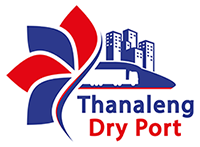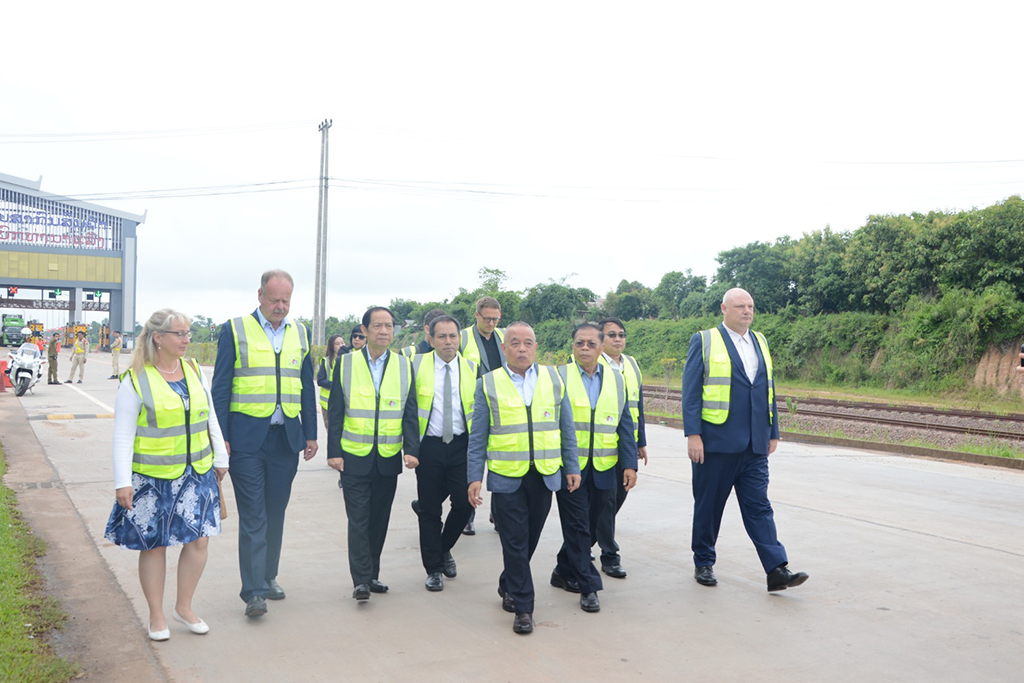
Thanaleng Dry Port hopes to link Asean with Europe, developer tells German delegation
With a rail network already in place, the Thanaleng Dry Port – Laos’ integrated logistics centre – is hoping to connect logistics and transport systems between Southeast Asia and Europe, the dry port’s developer has told a visiting delegation from Germany.
The delegation, led by Mr Wulf Gallert, Vice President of the State Parliament of Saxony-Anhalt and Co-Chairman of the International Commission of Die LINKE, visited the dry port and associated Vientiane Logistics Park on Wednesday.
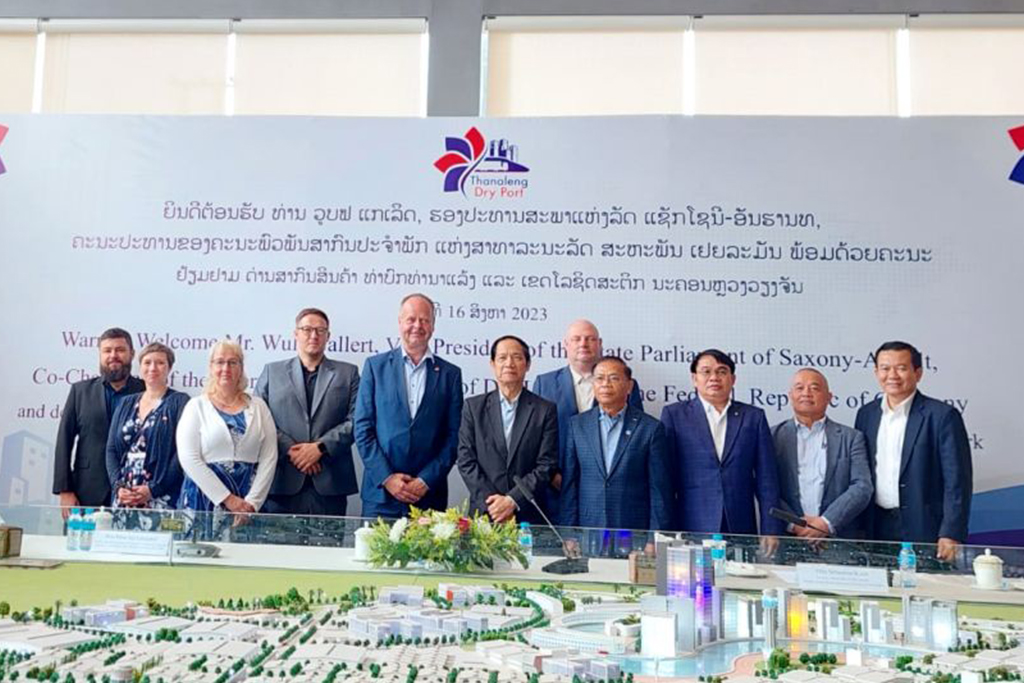
From Laos, a rail network already reaches Germany, the dry port’s Managing Director Sakhone Philangam told the guests.
Coming into service in December 2021, the Laos-China railway links to the China-Europe rail network. From China, freight can continue onwards through Kazakhstan, Russia, Belarus and Poland and even reach Duisburg in Germany. By rail, it takes about two weeks to move containers from Southeast Asia to Europe, as opposed to 45 days by sea.
“I have visited a dry port in Chongqing [in China], where freight transport from Duisburg in Germany to China by rail has already been done,” Mr Sakhone told the German delegation.
Consignments of freight included vehicles, vehicle spare parts and ice-cream, he added.
With that, the director said “We are dreaming of linking Asean [Association of Southeast Asian Nations] to Europe through our dry port.”
From the dry port, where the Laos-China and Laos-Thailand railways converge, freight can reach Laem Chabang, Thailand’s main deep seaport, about 150km south of Bangkok. From Bangkok, the trade route connects to the Malaysian capital Kuala Lumpur and onwards to Singapore.
Mr Sakhone told the guests he recently signed a Memorandum of Collaboration with the operator of Malaysia’s Perlis Inland Port, agreeing to jointly explore and establish a new cost-effective trade route to the Indian Ocean.
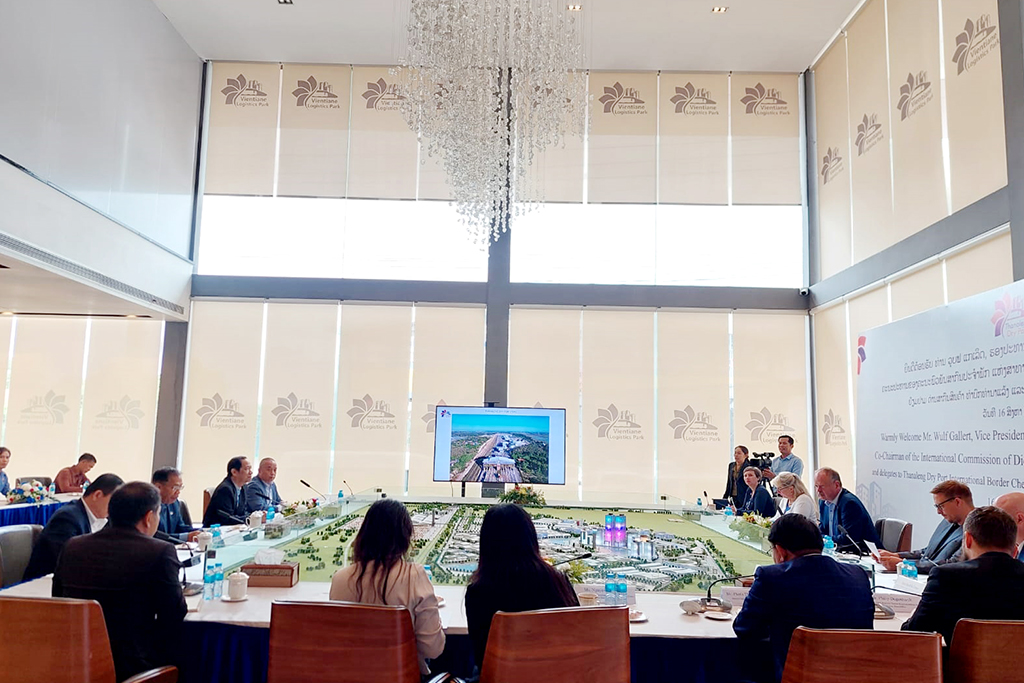
The multimodal-transport-node dry port in Vientiane is part of the packaged Lao Logistics Link (LLL), which includes the Vung Ang seaport in Vietnam’s Ha Tinh province, a planned railway linking the seaport to the dry port in Vientiane, and a logistics park in Khammuan province through which the planned railway will run.
Through Vung Ang, the trade route leads to countries in the Pacific region.
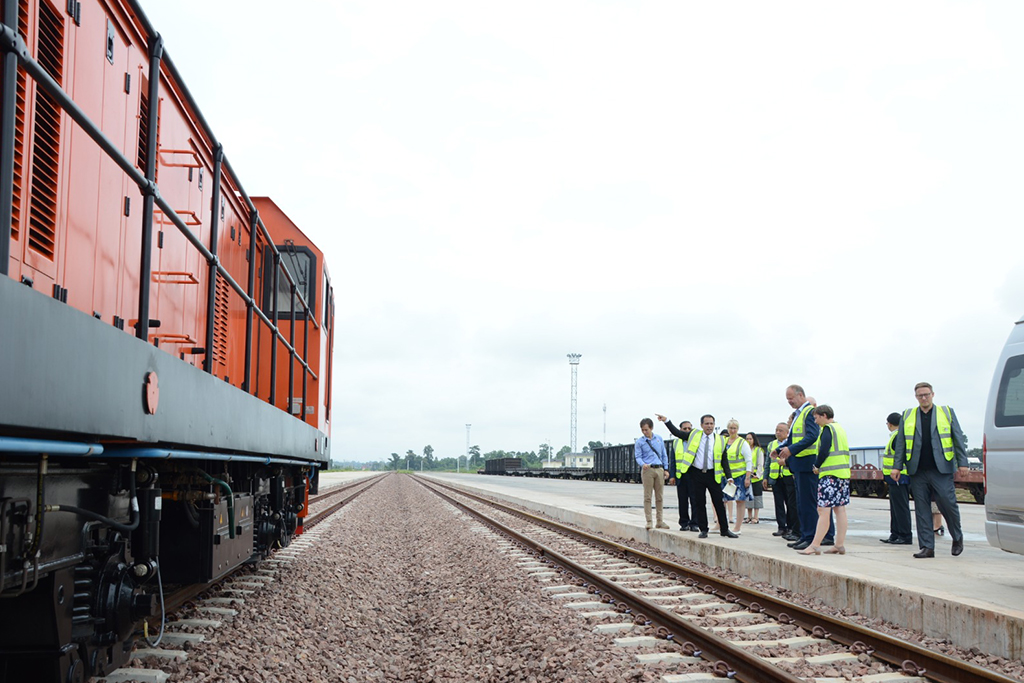
In a bid to further drive trade and investment, the director said an internationally-recognised SPS (sanitary and phytosanitary measures) centre is being built at the dry port in Vientiane. Scheduled for completion by the end of this year, the SPS centre will speed up the certification of agricultural products and enable faster shipment.
Opening in December 2021, just one day after the opening of the Laos-China railway, the dry port currently handles about 600 cargo trucks carrying about 200 containers each day, in addition to rail transport.
Last year, the dry port handled almost 50,000 containers, destined for many countries in the region.
Thanks to modern equipment, including a pre-alert system, the inspection of cross-border goods takes place quickly, so that the contents of each container can be inspected in just two minutes.
This rapid process enables the faster shipment of farm products, especially durian, which Thailand regularly exports to China.
The Thanaleng Dry Port International Border Checkpoint (Cargo Terminal) is recognised by the United Nations, said Alounkeo Kittikhoun, President of the Executive Board of Strategy and Planning at PTL Holding Company Limited (PTLH) – the parent company of the developer, Vientiane Logistics Park Co., Ltd.
Mr Alounkeo, who is a former Minister to the Prime Minister’s Office, said the dry port, one of nine dry ports planned to be built in Laos, adds fuel to the government’s efforts to transform landlocked Laos into a land-link country.
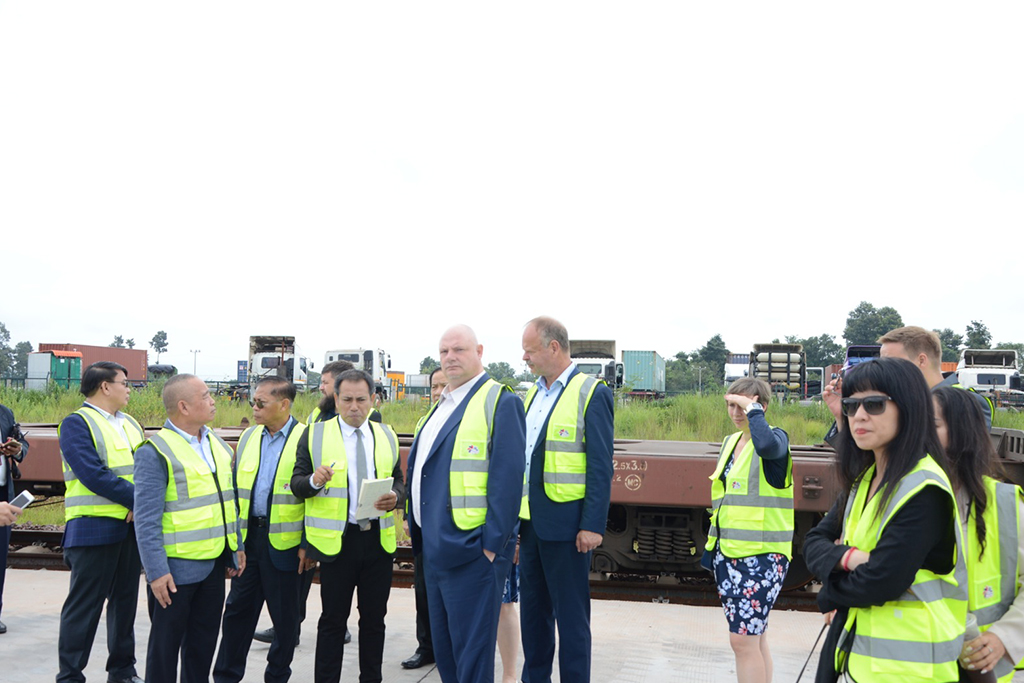
Through an interpreter, Mr Gallert noted that Laos is an important gateway connecting Asean with other regions and even Europe.
“This logistics link will bring Europe and Asean closer, and Laos and Germany in particular will become closer,” he said.
Mr Gallert added that the German side shares the intention to ease the transport of cargo between Europe and Asean, especially between Laos and Germany, to boost trade and national economies.
To tap the trade potential brought about by improved connectivity, the Lao investor told the guests that a logistics complex is being built on a 327-hectare site in Vientiane, near the first Laos-Thailand Friendship Bridge, to offer more investment opportunities to entrepreneurs.
The complex comprises seven zones, including an export processing centre, logistics park, free trade zone, and technology and halal hub.
Several incentives are being offered to potential investors, including a corporate tax holiday of 8-16 years and reduced Value-Added Tax, with cheap electricity being an added bonus.
Goods manufactured or assembled in Laos enjoy privileged access to markets in countries whose governments have waived or reduced import tariffs on made-in-Laos products.
More than 30 countries including Australia, Canada, members of the European Union (EU 28), Japan, New Zealand, Norway, Russia, Switzerland and Turkiye have extended such privileges to Laos.
